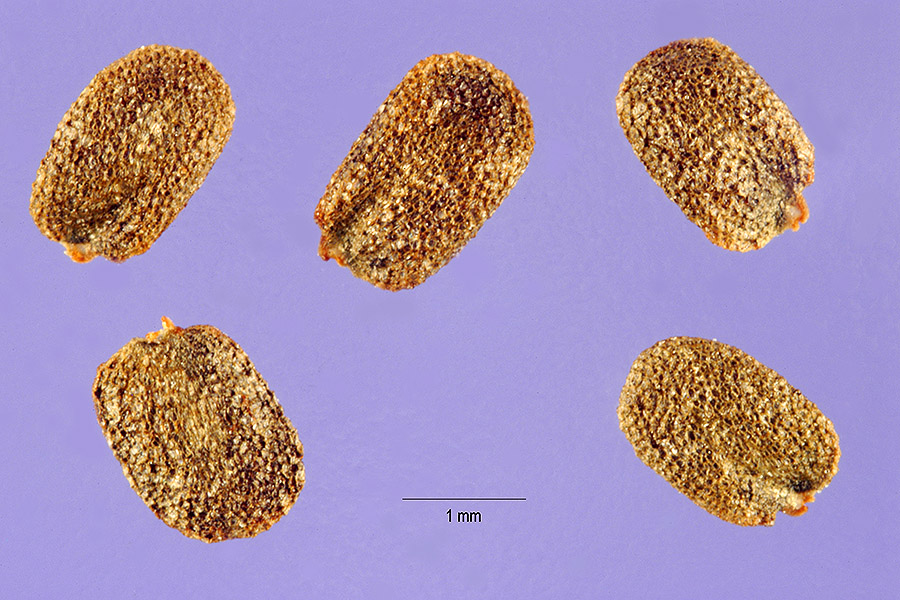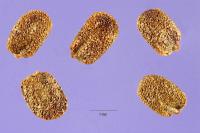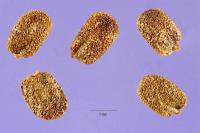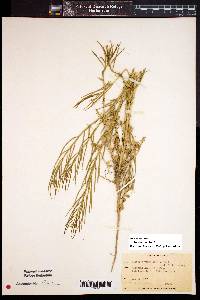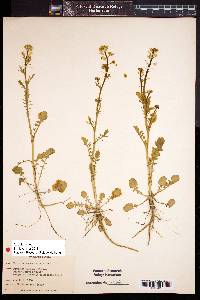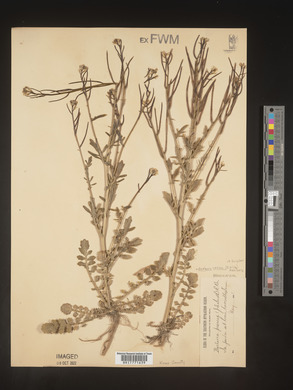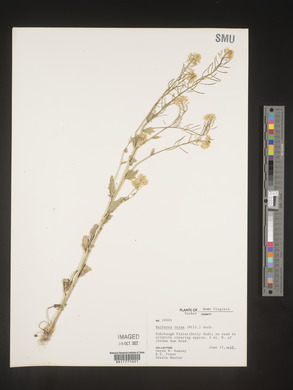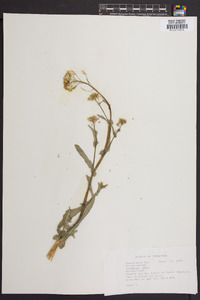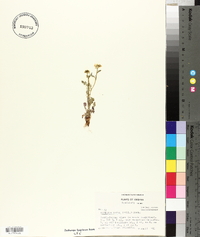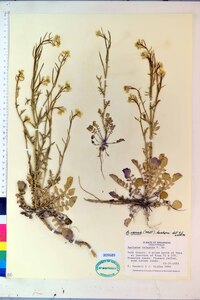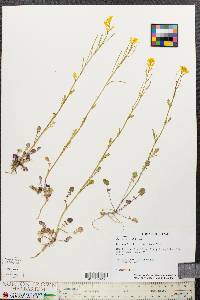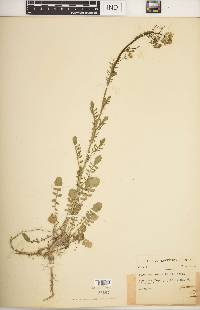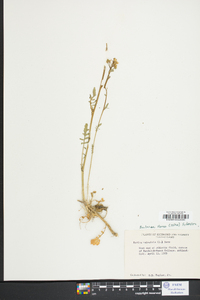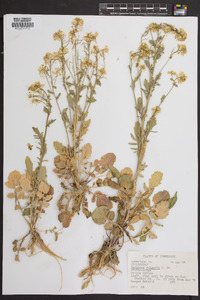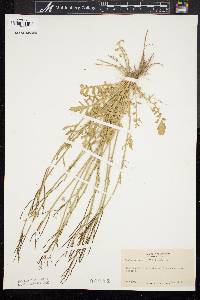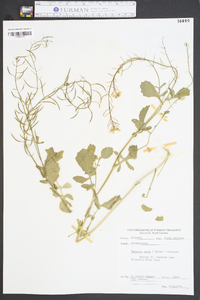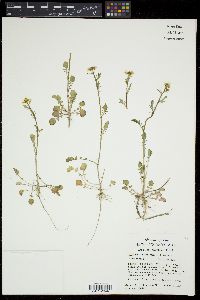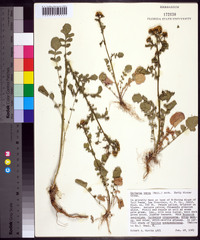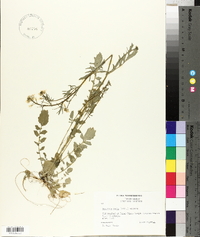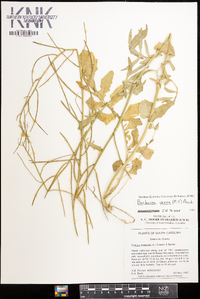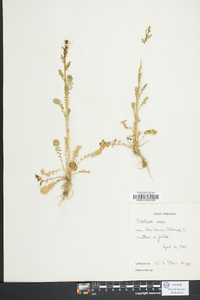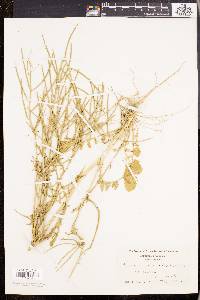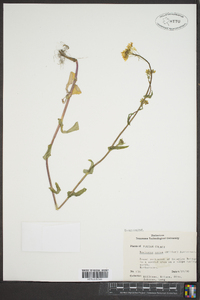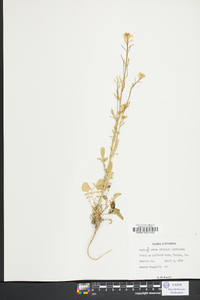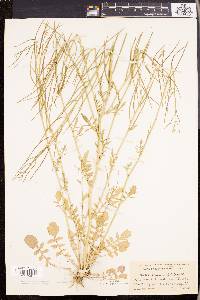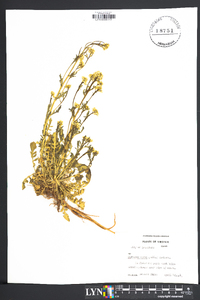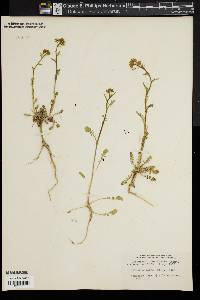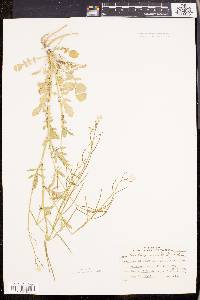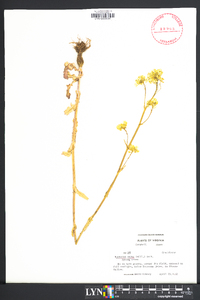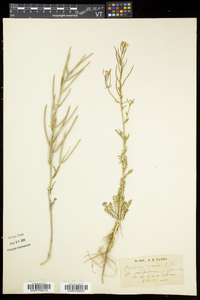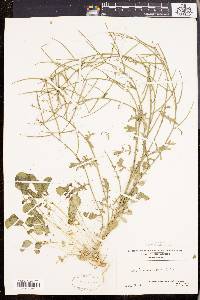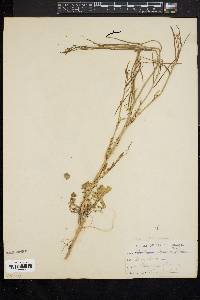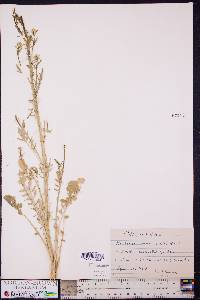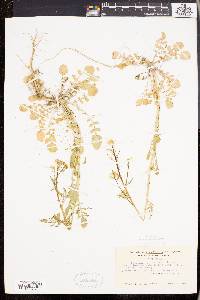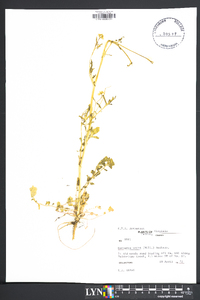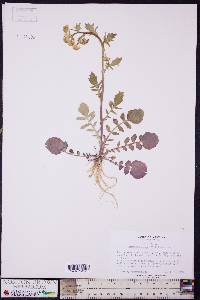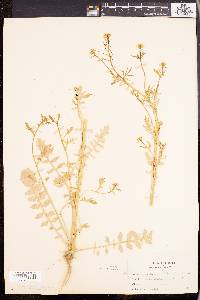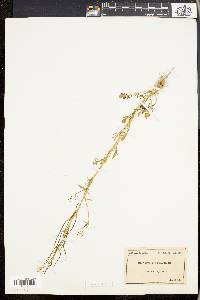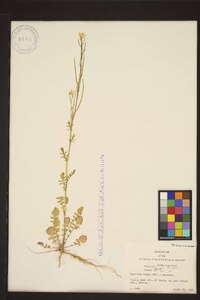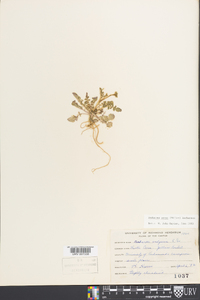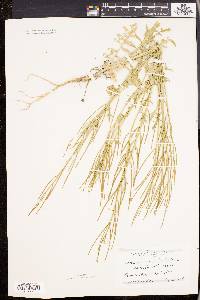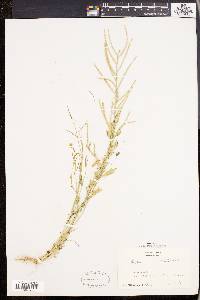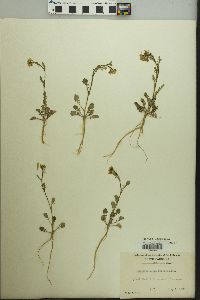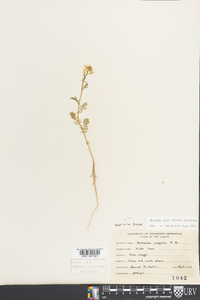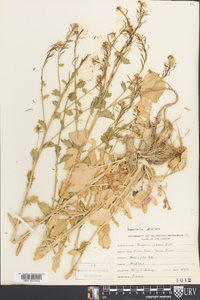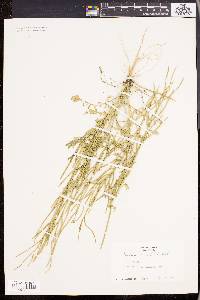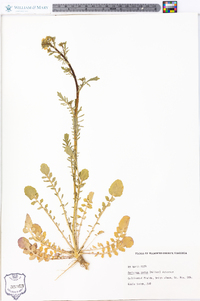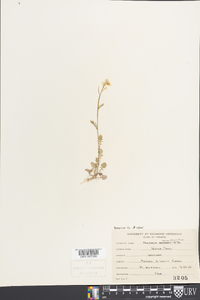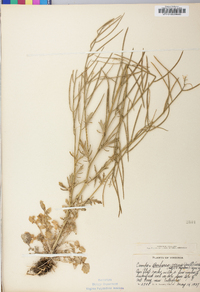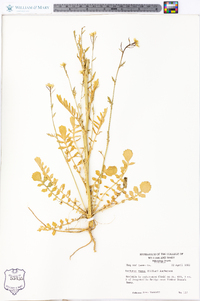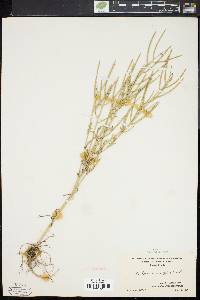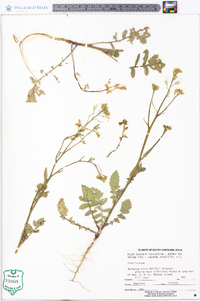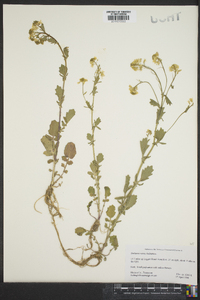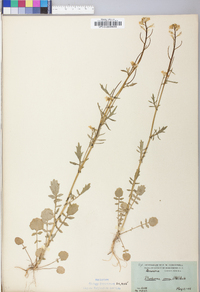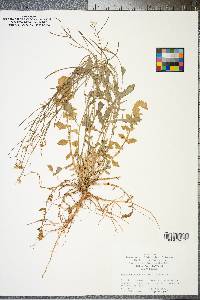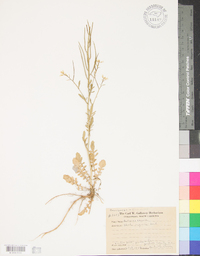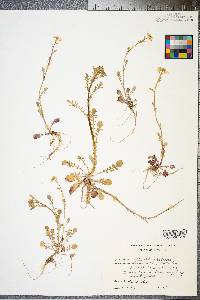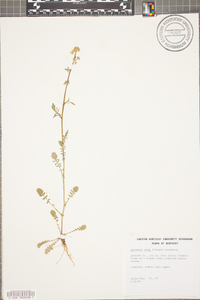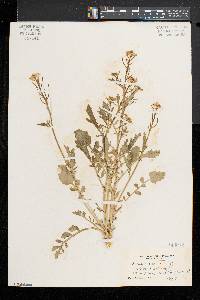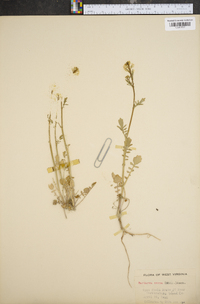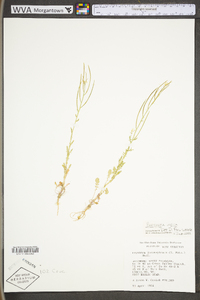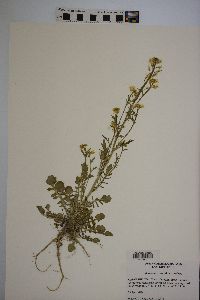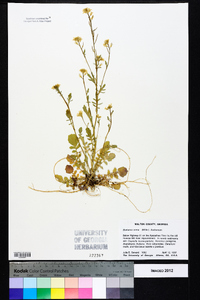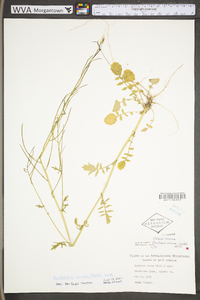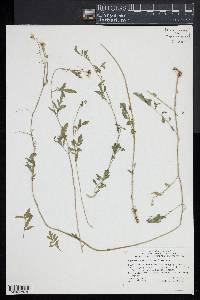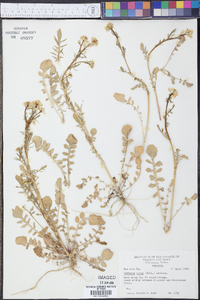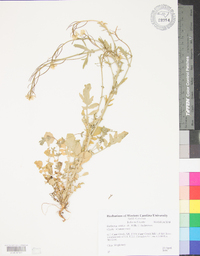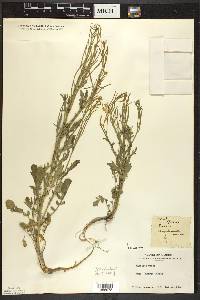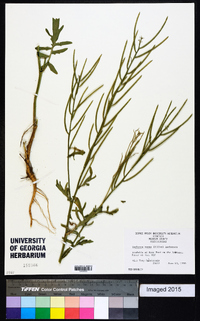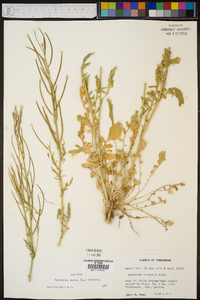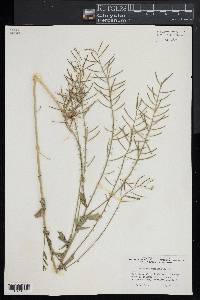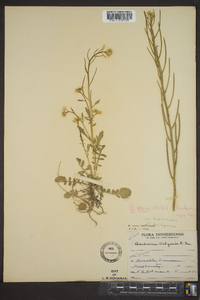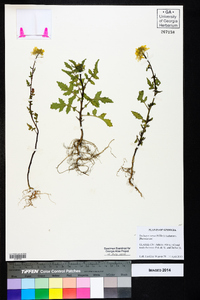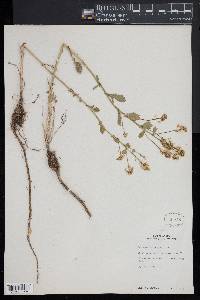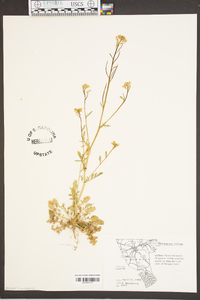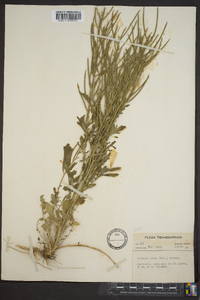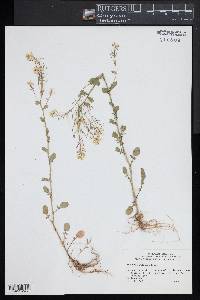
|
|
|
|
Family: Brassicaceae
Early Yellow-Rocket
[Barbarea praecox (Sm.) R. Br., moreCampe verna (Mill.) A. Heller, Erysimum vernum Mill.] |
Biennials or, rarely, perennials; mostly glabrous, except blade auricles ciliate. Stems (1-)2.5-8 dm. Basal leaves: petiole (0.5-) 1-6(-8) cm; blade pinnatifid to pinnatisect, 1.5-11 cm, lobes (3-)6-10 on each side, lateral lobes oblong or ovate, 0.4-3 cm × 1-10 mm, not fleshy, margins entire, terminal lobe considerably larger than lateral ones, 1-5 cm × 10-350 mm. Cauline leaves: blade pinnatisect, lateral lobes 1-4, (oblong to lanceolate), margins often entire, rarely coarsely toothed; conspicuously auriculate, auricles ovate or narrowly oblong, (to 10 × 4 mm, margins entire). Fruiting pedicels divaricate to ascending, (2-)3-6(-7) mm, terete, stout (almost as broad as fruit). Flowers: sepals 3-5 × 0.7-1.5 mm, lateral pair slightly saccate basally, margins scarious; petals yellow or pale yellow, oblanceolate to spatulate, (5-)6-7(-8.5) × 1.5-3 mm, base cuneate, apex truncate or emarginate; filaments 3-5 mm; anthers 0.8-1.2 mm; ovules (34-)38-48(-52) per ovary; gynophore to 0.3 mm. Fruits erect to ascending, not appressed to rachis, torulose, subterete to slightly latiseptate, (4.5-)5.3-7(-8) cm × 1.5-2 mm; style stout, 0.2-1(-2) mm. Seeds dark brown, somewhat plump, oblong or quadrate, 1.8-2.5 × 1.4-1.6 mm. 2n = 16. Flowering Mar-Jul. Waste grounds, fields, limestone glades, rocky outcrops, fields, railroad embankments, disturbed sites, roadsides; 0-1600 m; introduced; B.C., Nfld. and Labr. (Nfld.); Ala., Alaska, Ark., Calif., Colo., Conn., Del., D.C., Ga., Ill., Ind., Ky., Maine, Md., Mass., Mich., Miss., Mo., N.J., N.Y., N.C., Ohio, Oreg., Pa., R.I., S.C., Tenn., Va., Wash., W.Va.; Europe; Asia; n, s Africa; introduced also in Mexico, South America (Argentina, Brazil, Chile), Australia. Biennial or short-lived perennial herb 30 cm - 0.8 m tall Stem: upright. Flowers: in branched clusters, yellow, 6 - 8 mm long. Petals four. Stamens six. Fruit: a narrow pod, widely ascending, 4.5 - 7 cm long, on a 3.5 - 7 mm long, 1.2 - 1.8 mm wide stalk, straight or nearly so, with a 1 - 2.5 mm long beak. Basal leaves: to 20 cm long, oblong, with four to ten pairs of lobes. Lobes egg-shaped with slightly wavy margins. Stem leaves: alternate, clasping the stem, smaller than basal leaves, with three to eight pairs of lateral lobes. Lobes oblong to linear with mostly non-toothed margins. Similar species: The similar Barbarea vulgaris differs by having one to four pairs of lobes on its basal leaves and shorter pods (1.5 - 4 cm). Flowering: late April to early June Habitat and ecology: Introduced from Europe. It is now naturalized in the East and in the far western states and British Columbia. In the Chicago Region, Barbarea verna is known from Berrien (occasional) and St. Joseph counties in Indiana. It is typically found in fields and along roadsides and railroads, usually in damp soil. Occurence in the Chicago region: non-native Etymology: Barbarea refers to St. Barbara, a patron saint of artillerymen and miners. Verna means Spring. Author: The Morton Arboretum Erect, 3-8 dm, peppery; lower lvs oblong, to 2 dm, with 4-10 pairs of ovate, repand lateral lobes; cauline lvs smaller, with 3-8 pairs of oblong to linear, mostly entire lateral lobes; pet 6-8 mm; mature pedicels 3.5-7 נ1.2-1.8 mm; frs widely ascending, straight or nearly so, 4.5-7 cm, the beak 1-2.5 mm; 2n=16. Native of Eurasia, naturalized in damp soil, fields, roadsides, etc. from Nf. to Wash., s. to Fla. and Calif. Apr.-June. (Campe v.) Gleason, Henry A. & Cronquist, Arthur J. 1991. Manual of vascular plants of northeastern United States and adjacent Canada. lxxv + 910 pp. ©The New York Botanical Garden. All rights reserved. Used by permission. From Flora of Indiana (1940) by Charles C. Deam Locally frequent in a few of the southern counties and probably scattered throughout the state. I have specimens from fallow fields, an orchard, roadsides, and railroads. ...... Indiana Coefficient of Conservatism: C = null, non-native Wetland Indicator Status: n/a |

